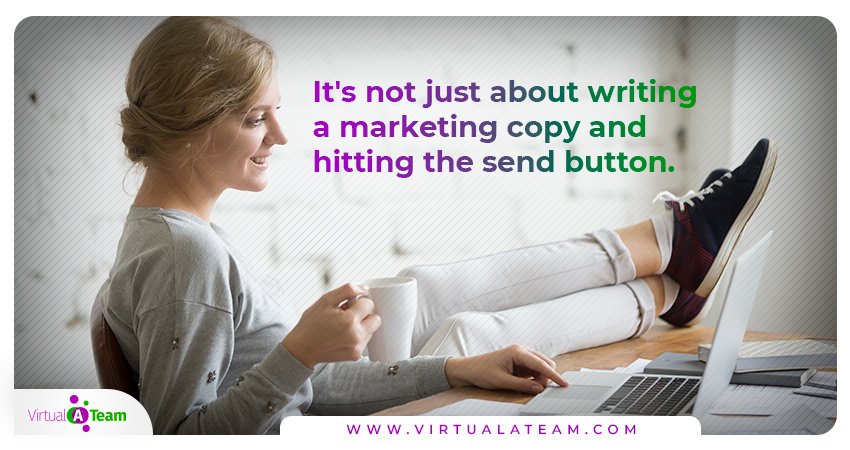Do you feel lost when entrepreneurs applaud email marketing as the best form of marketing? Is your email list as long as the Queen's list in Rumpelstiltskin?
Whether your list is large or small, do you feel as if you don't gain maximum value from your email marketing lists?
If so, then something is wrong. While bigger audiences should follow up with more impact and more returns, even small audiences but highly targeted audiences can provide big value.
But, like many things in business, email marketing is a skill that most entrepreneurs don't have. It's one thing to have a large audience and another to keep them interested in what you have to say.
Keeping that interest is where most businesses run into problems. It's not just about writing a marketing copy and hitting the send button. There is a lot more to email marketing than that, and we would explore that together in this article.
First, let’s take a look at how to make the most out of your long list. There are several things that are so important in email marketing; they can't be ignored. The first of them is the welcome sequence.
The Welcome Sequence
Congratulations, we have succeeded in adding a subscriber to our email marketing lists. Now, it's time to send them that very first email that begins the virtual relationship we hope to have with this person.
In every relationship, you need to make an excellent first impression. So we have to make this good. This is where most entrepreneurs make a mistake. They usually send an email that says, “welcome, and thank you for subscribing."

After the welcome email, they begin to send their regular emails to this subscriber. In doing this, they forget something fundamental. The welcome sequence isn't just a single email; it's a series of emails that keep your grabs your subscriber's attention.
Depending on how great your welcome sequence is, your subscriber might find themselves signing up for other services and becoming a raving fan.
Let's face it, the average person with an email is a subscriber on at least fifteen email marketing lists. With this statistic, the goal is to stand out, to be the one whose email is anticipated every day and responded to.
The Welcome Sequence is the place to make a lasting first impression. This email campaign should have about 3 to 6 emails in it. You can begin by sending three emails in quick succession once they subscribe. The other emails we can send spaced out over days or weeks.
The first three emails have to be carefully structured to say more with fewer words. No one wants to read a term paper. The goal is to structure our email in such a way that we welcome our subscriber while giving them an overview of whom we are and the services we offer.
We would also them know what to expect from our emails such as how often they would get an email from us. For better success with the welcome sequence, see what digital marketing strategist, Meera Kothand has to say.
How often is too often?
Now that we have gotten these subscribers hooked on our emails, it's time to keep their interest. In email marketing, this is one of the hardest parts. The marketing copy isn't a problem at this point, rather the frequency at which we send emails is.
How much is too much? Remember that in part of your welcome sequence, you did tell your subscriber what to expect in terms of the frequency with your emails.
Firstly, with this very new and interested subscriber, we don’t want to disappoint. We want to keep to our word, so if we said once a week, we keep it at once a week until we are ready to change things up.
Although this subscriber knows what to expect from us every week, we still need to find out what works. It isn't just about sending emails; it's about getting a favorable response.

Several studies have been carried out to find out what level of frequency per month brings a maximum response. From the results compiled, 2 to 4 emails per month seem to be the sweet spot.
But if you have more information to give to your subscribers, then you need to send them additional emails. Two to four emails per month aren't the standard. The frequency should depend on the subscribers' response.
Pro Tip
Don’t be afraid to send more emails. Even daily, short emails can be valuable depending on your audience. Remember, if they unsubscribe, they probably weren’t going to buy from you anyway.
When is it time to let a subscriber go and why
In relationships, there comes the point when either partner can see no future. It's possible that they have tried their very best to breathe back life into this relationship. But nothing seems to be yielding results. At this point, it's time to step back.
This principle also works for the relationship between you and your subscribers. For an active email marketing list, you need to carry out periodic weeding.
We did a deep dive on Cleaning Your Email List here.

Weeding doesn't sound so good, but you have to. So, when and why do we need to let go of some subscribers.
You undergo a weeding exercise on your email marketing list when you notice that your click-through rates are not growing in direct proportionality with your mailing list.
This weeding exercise is one of the red flags that tell you that some people need to go. It could be anything.
It's possible that the old timers aren't too interested anymore and haven't opened our emails in over a year. Or maybe your emails have been sent to the Spam folder and your audience isn’t even seeing them anymore.
Sometimes, it could be that your subscribers have tried and failed to unsubscribe for one reason or the other. Following their failure, they now keep your emails in the spam folder or worse delete them. Ouch! Either way, it's time for a massive cleanup.
You don't need to won't worry about having so many people on your list go out if they aren't contributing. Having a long email list is excellent, but having quality subscribers is better. It's quality over quantity.
But what about the reasons? When you weed your list periodically, you will see better click-through rates and more returns. You're not going to get that if we don't carry out periodic weeding. Just as the analogy implies, getting rid of the weeds allows for more vibrant blooms to grow.
By occasionally weeding your list, you’ll see better results with less effort.

Segmentation
Everyone knows that a more targeted approach yields better results. This approach is where segmentation comes in. Segmentation is nothing more than arranging your email marketing lists based on specific criteria.
Why should there even be segmentation? If you're going to send targeted emails to people, we want to have them in groups. Even if you tried, you can't send specialized emails to every single person. No doubts, it's exhausting and time-consuming.
So arrange your mailing list according to specific criteria. It could be based on demographics, age, or primary interests. The main thing is to send out specially targeted emails to people in an easy a way as possible.
This targeted email gives it a more personal approach. It seems as if you're dealing with issues that affect them personally and not the entire world. The personal approach always works wonders. So a little segmentation now and then would help you achieve that personal angle you're aiming for.
Pro Tip
We often see people added to email lists from many different sources. It’s likely that someone you met at a book signing for your relationships book doesn’t want to receive your emails about your new fitness program. Keep your lists separate and segmented.
Audience
The audience is the most crucial part of email marketing. Writing the best marketing copy in the entire world makes no sense until it is directed to an audience. In some instances, marketing copies cannot be written until you target a particular audience.
Your audience is the subscribers. The thing about building an audience is that you need to target a particular demographic. This depends on the type of content or services you offer. For instance, we reach out to business and life coaches based on the services we offer.
If we send out marketing emails to pregnant moms in part time jobs, we won't get any response. This is because the audience does not care about building an online business.
Knowing your target audience and understanding what they need is therefore very important. Also, you need to create content that impacts your audience and keeps your audiences interested in your emails.
There are several benefits to focusing on your target audience. One of them is that you save yourself the time that would be spent trying to tailor your copy to reach another audience. Focusing on your target audience also gives you high and improved click-through rates. And that is something you need.
In Summary
To get the most out of your email marketing, start with a robust email welcome sequence. One email alone won’t do it. Then make sure you are consistent with your emailing frequency. It’s also important to clean your list on occasion and make sure you are targeting the right audience.
Like I said before, email marketing is a skill. When you learn its fine points, you can begin to enjoy maximum benefits. Remember, you and your subscribers are in a relationship.
This relationship would help you relate better with them and give you a better chance of keeping them happy and interested in you. And if you can’t manage your list, let Virtual A Team help you get the job done.
Virtual A team does it all, from content creation and managing emails to full management and strategy. We will help make your email list work for you, not the other way around. To learn more about our services, click here.



